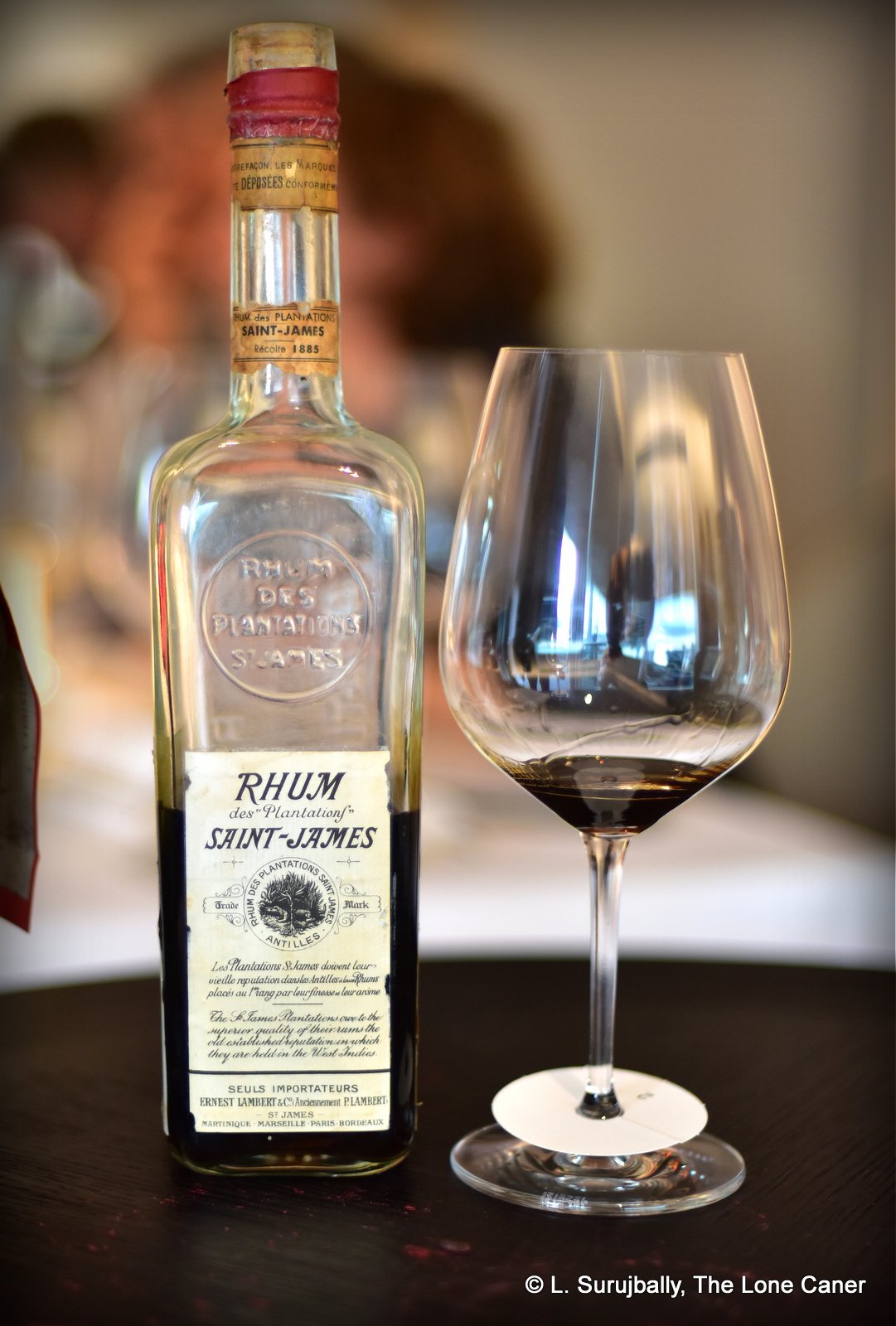
By now just about anyone in touch with the rum blogosphere on social media is aware of the add-on to the Hampden Rums launch hosted by La Maison-Velier in September 2018: the “Rum Tasting of the Century” — though I believe the words “…so far” were were silently tacked on by some of us participants, hoping against hope for another (better, older) one before we get laid to rest like Nelson in a cask of DOK. Nor are many unaware of the four aged unicorn rums we were privileged to try as part of the Tasting – Skeldon 1978, Bally 1924, Harewood House 1780, and the subject of this revisit, the Rhum des Plantations St. James 1885.
I’d had the luck and good fortune to sample the St. James before and have written about it as part of the Rumaniacs. This of course cut me absolutely zero slack with the attending Collective – because for all our camaraderie and friendship (online and off), we’re a cheerfully competitive bunch of people, and like to get our personal opinions settled (no others being as good as our own, naturally) before even acknowledging that someone else may have tried a particular rum in front of us.
 Still, we had to get facts, and a lot of our preliminary conversations and subsequent texts and messages revolved around the data points, which are as follows: the rhum was made in 1885 on Martinique, and derived from cane juice that was boiled prior to fermentation. Although the exact age is unknown, it was certainly shipped off the island before Mount Pelée erupted in 1902 and destroyed all stocks there, so at an absolute maximum it can be 17 years old. This is, however unlikely – few rums or rhums were aged that long back then, and the opinion of the master blender of St James (Mark Sassier) that it was 8-10 years old is probably the best one (Cyril of DuRhum has some additional details in his 2016 review) . Following the eruption of the volcano, the only remaining bottles were in Europe and gradually unsold ones were acquired (many from the cellars of Bardinet) and sent back to Martinique and put on sale. Luca, who was a brand ambassador for St. James at one time, eventually acquired (or so legend goes) about 300 bottles in the 1980s. One of them, 47% ABV as tested in 1991, stood before us in a conference room in the Four Seasons in London overlooking theThames, awaiting our attention.
Still, we had to get facts, and a lot of our preliminary conversations and subsequent texts and messages revolved around the data points, which are as follows: the rhum was made in 1885 on Martinique, and derived from cane juice that was boiled prior to fermentation. Although the exact age is unknown, it was certainly shipped off the island before Mount Pelée erupted in 1902 and destroyed all stocks there, so at an absolute maximum it can be 17 years old. This is, however unlikely – few rums or rhums were aged that long back then, and the opinion of the master blender of St James (Mark Sassier) that it was 8-10 years old is probably the best one (Cyril of DuRhum has some additional details in his 2016 review) . Following the eruption of the volcano, the only remaining bottles were in Europe and gradually unsold ones were acquired (many from the cellars of Bardinet) and sent back to Martinique and put on sale. Luca, who was a brand ambassador for St. James at one time, eventually acquired (or so legend goes) about 300 bottles in the 1980s. One of them, 47% ABV as tested in 1991, stood before us in a conference room in the Four Seasons in London overlooking theThames, awaiting our attention.
The first thing everyone remarked on about this rhum was the colour – a dark dark dark mud brown. The second thing was the aroma. Without doubt this remained one of the richest rum smells of my own experience: it was redolent of coffee, licorice, coca-cola, bitter chocolate, coconut shavings accompanied by enormous notes of molasses. There were, after some additional minutes, some light fruits and florals and lemon peel, but overall, it reminded one of nothing so much as a Demerara rum, not an agricole, and a really heavy, thick Demerara at that.

Though my tasting memories of the first 1885 rum I had tried three years earlier had faded somewhat, I still remembered much of the core profile, and these were back for an encore, with the same dull richness that made it so memorable back then. Bitter chocolate, nougat, nuts, grated coconut and coffee led off the charge, with flanking movements of licorice, caramel, coke and the noticeable leather and oak tannins that spoke to some ageing. Fruits again – pears, orange zest, plums, blackberries. The texture on the tongue was heavy, stopping just short of cloying, and I must remark on the fact that it was overtaken a little too much by the forceful molasses tastes. Still, it was a great sip, and the rum glided smoothly to the finish with last notes of earthy mustiness, roasted chestnuts, molasses (of course), fast-fading fruitiness, dates and chocolate.
What a difference a mere three years makes. In 2015 my sample of the Saint James 1885 got rated 90, and I commented favourably on its depth and complexity. Certainly, compared to the rhums against which it was being tried that day (Barbancourt 25 YO and 15 YO, La Martiniquaise Rhum Pur, La Favorite 1990, and J. Bally 6 YO) and my own experience with uber-old spirits to that point, it was a score I have no problems defending. However, since then I’ve tasted and gone into depth with and written about another 300+ rums, and quite aside from wry commentaries about not having a life, it’s clear that both increased experience and different comparators do make a difference in assessing the same rum years later.
On that basis, I’m going to rank it a few points lower this time, but in truth, the score is meaningless for a rhum this rare and that expensive and from so far back. I think that for anyone who has opportunity to try a rum made over a hundred years ago, it’s enough to simply say that they drank it. It’s a window into perceiving French island’s rhum before agricoles became agricoles, before the AOC, before the production methodologies of today. It promotes understanding of how rum has developed and changed over the decades and centuries, and if one is left with a single thought after the fact, it’s that it was and remains an experience to rival few others in our long journey of rum appreciation. That alone might be worth all the points anyone could ever give it.
(#551)(87/100)
Other Notes
- All the Rumaniacs’ members reviews can be found here.
- Links to other articles on the Rum Tasting of the Century (to be updated as other bits and pieces appear):
- Rum Diaries Blog event narrative.
- Cocktail Wonk write up of the evening
- Marco Zucchetti for WhiskyFacile reviews the rums: Part 1 and Part 2 (Italian only)
- Velier home page press roundup

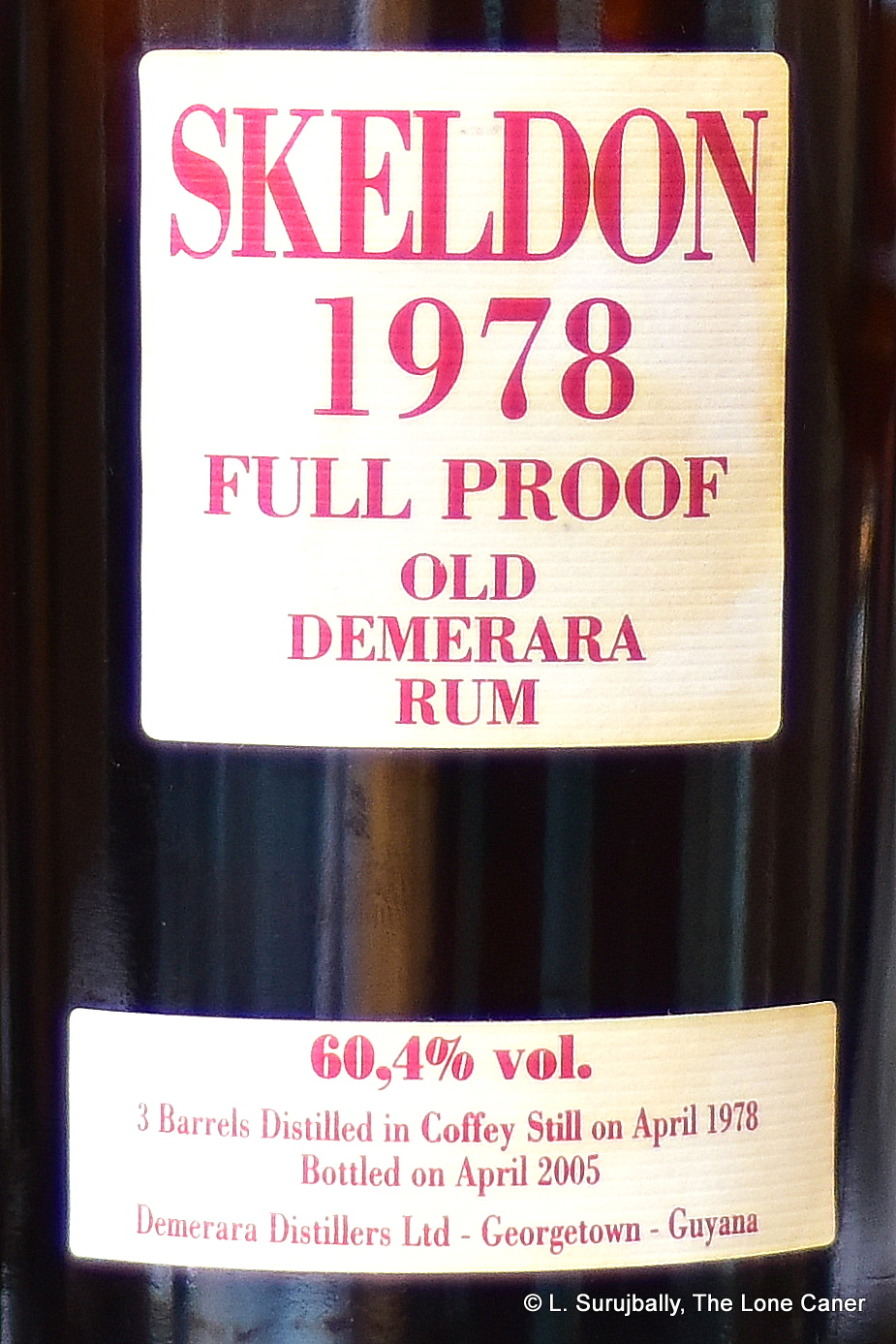 The history of the Skeldon 1978 bottling from a long-dismantled Savalle still is an odd one: the plantation is on the far eastern side of Guyana and the distillery has been shut down since 1960, though the original sugar factory’s remains continue to moulder away there, now replaced by a modern white elephant. It’s possible that the Savalle still which made it was taken elsewhere (Uitvlugt is the unconfirmed suspect) and this distillate hails from there rather than Skeldon — but certainly the “SWR” barrels ended up at Diamond, where Luca saw them gathering dust in the warehouse and convinced Yesu Persaud (the chairman of DDL at the time) to part with them. The 4-barrel 544-bottle outturn of the
The history of the Skeldon 1978 bottling from a long-dismantled Savalle still is an odd one: the plantation is on the far eastern side of Guyana and the distillery has been shut down since 1960, though the original sugar factory’s remains continue to moulder away there, now replaced by a modern white elephant. It’s possible that the Savalle still which made it was taken elsewhere (Uitvlugt is the unconfirmed suspect) and this distillate hails from there rather than Skeldon — but certainly the “SWR” barrels ended up at Diamond, where Luca saw them gathering dust in the warehouse and convinced Yesu Persaud (the chairman of DDL at the time) to part with them. The 4-barrel 544-bottle outturn of the 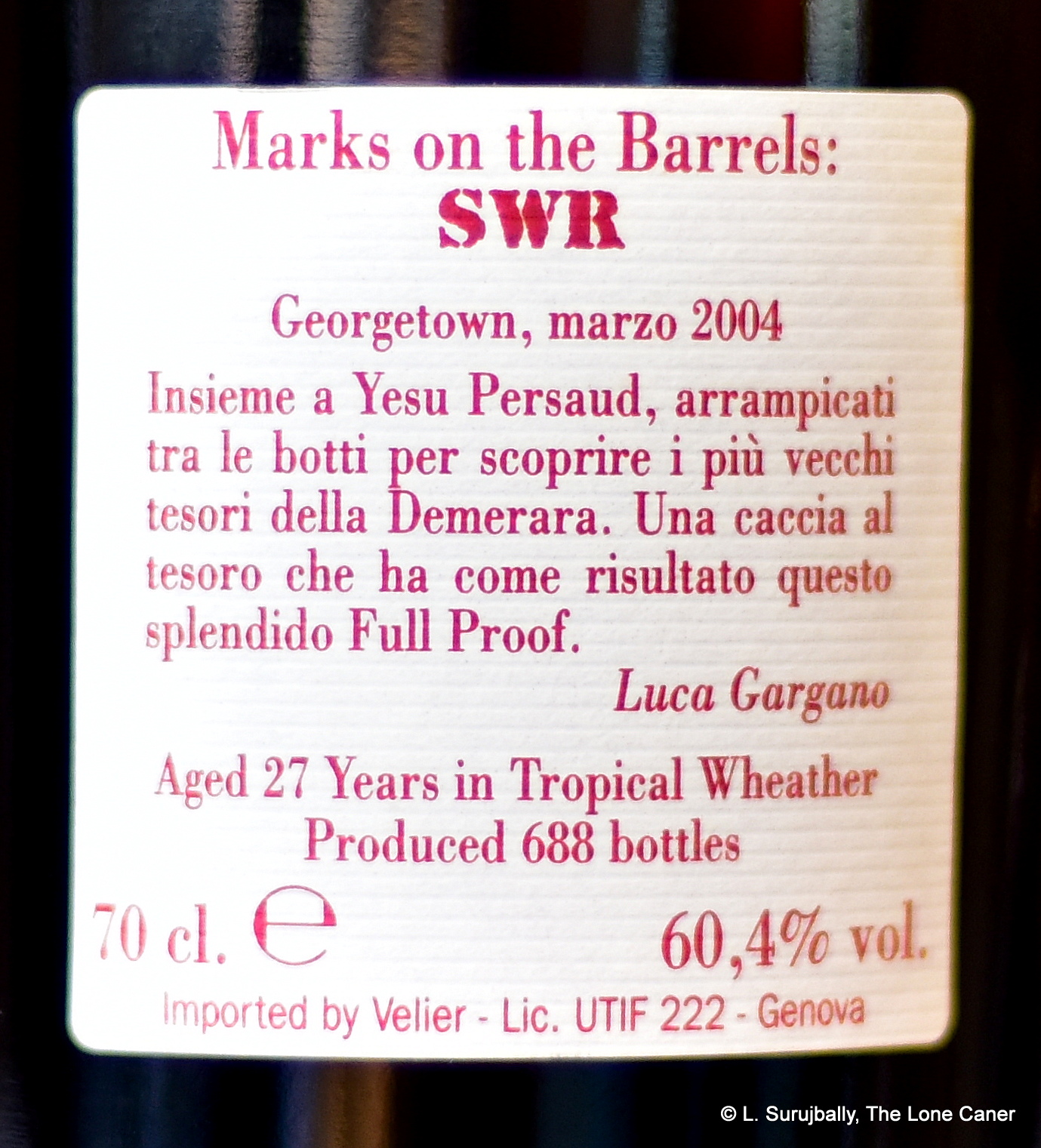 Although things at the Tasting were going faster than I was able to write (and listen), this was not a rum I wanted to be hurried with after waiting so long, and certainly it’s one with which to take one’s time. It unfolded gradually on the tongue, almost languorously and even at 60.4%, it was amazing how entirely under control it remained the entire time. Most of the tastes in the nose carried over, primarily anise, coffee and bitter chocolate, oranges, strong black tea, cumin, and that lentil soup / beef broth meatiness I remarked on earlier. But there were also more muted, subtler hints of papaya and fleshy fruits, aromatic tobacco, flambeed bananas and salty caramel. A rather dry note of over-roasted nuts came into play at the back end, a slight indeterminate bitterness (something like a manager who can never compliment your work without a closing criticism), but fortunately the muskier fruit and creamy notes ameliorated it for the most part. And while the finish was more a last bow on the stage than a true epilogue that added a few extra fillips of flavour, it was in no way disappointing, leaving me with a memory of coffee, nougat, salt caramel ice cream, fruits, raisins, licorice and light chocolate oranges.
Although things at the Tasting were going faster than I was able to write (and listen), this was not a rum I wanted to be hurried with after waiting so long, and certainly it’s one with which to take one’s time. It unfolded gradually on the tongue, almost languorously and even at 60.4%, it was amazing how entirely under control it remained the entire time. Most of the tastes in the nose carried over, primarily anise, coffee and bitter chocolate, oranges, strong black tea, cumin, and that lentil soup / beef broth meatiness I remarked on earlier. But there were also more muted, subtler hints of papaya and fleshy fruits, aromatic tobacco, flambeed bananas and salty caramel. A rather dry note of over-roasted nuts came into play at the back end, a slight indeterminate bitterness (something like a manager who can never compliment your work without a closing criticism), but fortunately the muskier fruit and creamy notes ameliorated it for the most part. And while the finish was more a last bow on the stage than a true epilogue that added a few extra fillips of flavour, it was in no way disappointing, leaving me with a memory of coffee, nougat, salt caramel ice cream, fruits, raisins, licorice and light chocolate oranges.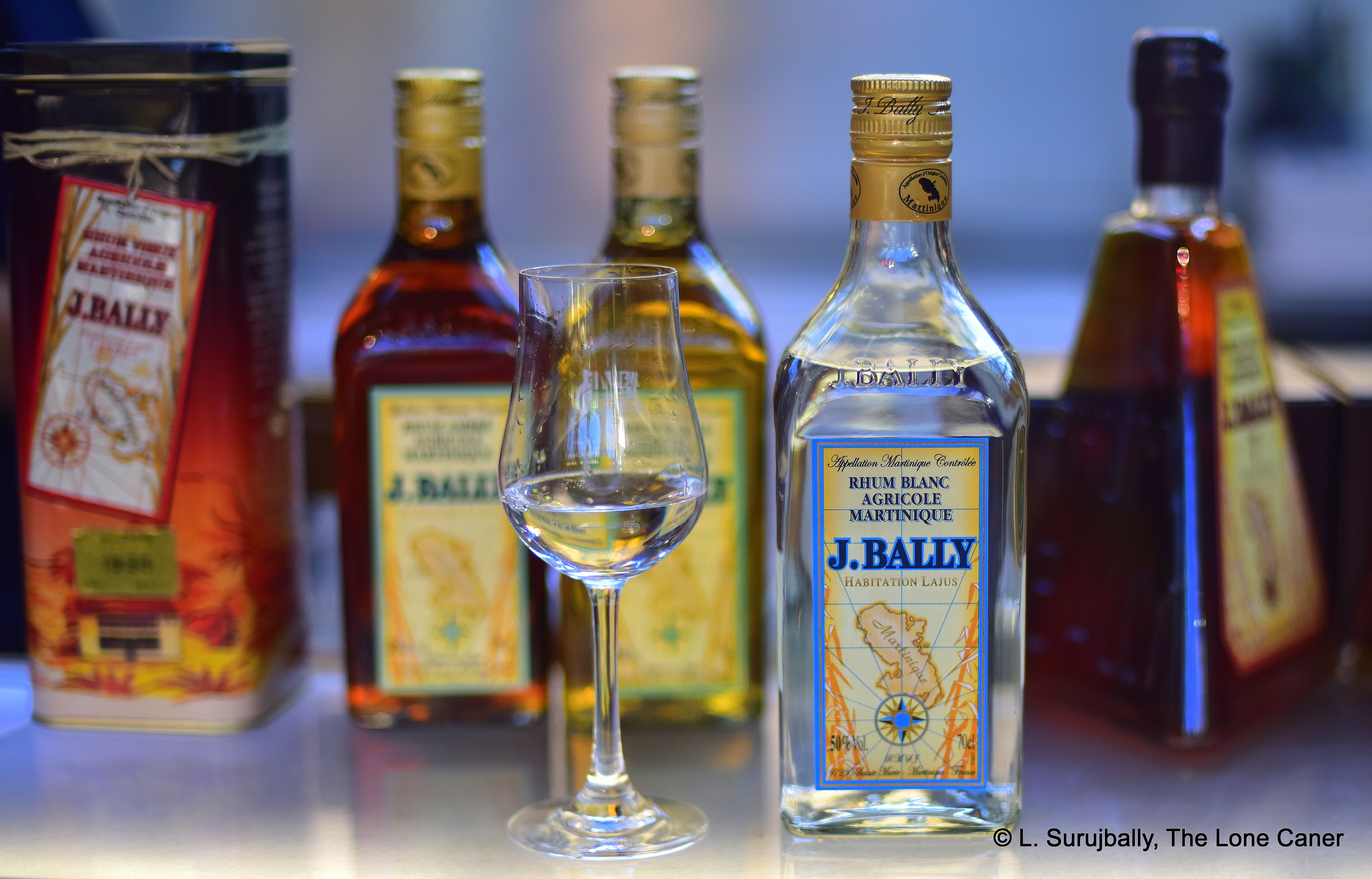
 Well, that out of the way, let me walk you through the profile. Nose first: what was immediately evident is that it adhered to all the markers of a crisp agricole. It gave off of light grassy notes, apples gone off the slightest bit, watermelon, very light citrus and flowers. Then it sat back for some minutes, before surging forward with more: olives in brine, watermelon juice, sugar cane sap, peaches, tobacco and a sly hint of herbs like dill and cardamom.
Well, that out of the way, let me walk you through the profile. Nose first: what was immediately evident is that it adhered to all the markers of a crisp agricole. It gave off of light grassy notes, apples gone off the slightest bit, watermelon, very light citrus and flowers. Then it sat back for some minutes, before surging forward with more: olives in brine, watermelon juice, sugar cane sap, peaches, tobacco and a sly hint of herbs like dill and cardamom.
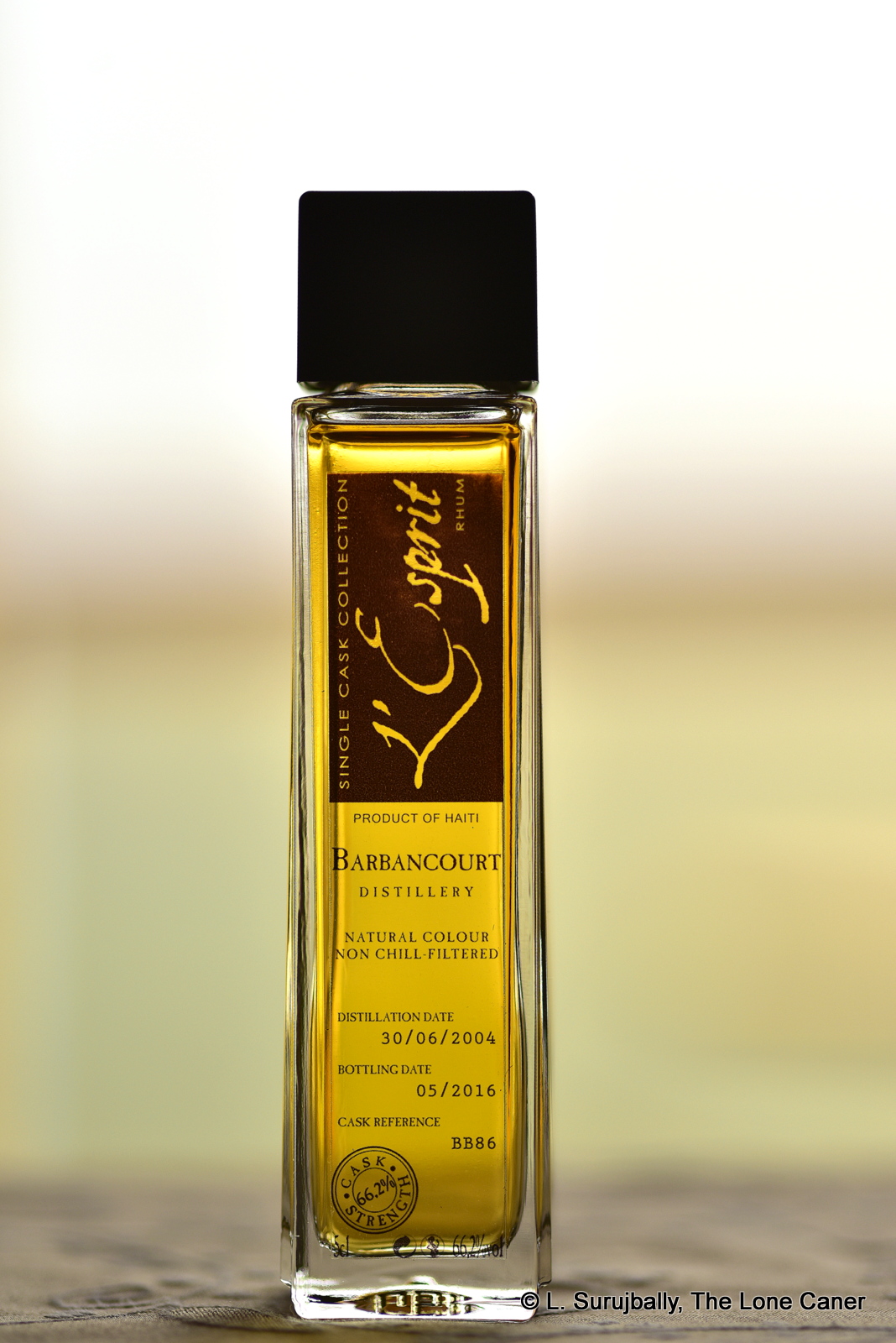 The bare statistics are brief and as follows: column still product, continentally aged; distilled 2004 and released in 2016 at a brobdingnagian 66.2% (its lesser proofed twin which is quite similar is bottled at 46% and 228 bottles were issued but about the full proof edition here, I’m not certain – less, for sure, maybe a hundred or so). Pale yellow in colour and a massive codpiece of a nose, deep and intense, which should not present as a surprise at all. It was quite aromatic as well – one could sense bananas, vanilla, prunes and fruit, with a nice counterpoint of citrus to set these off. Like many rums released at cask strength, it rewarded patience because after a while back-end smells of cream cheese, dark bread, brine, olives, nail polish, plastic bubble wrap (freshly popped), paint became much more evident, though fortunately without taking over entirely
The bare statistics are brief and as follows: column still product, continentally aged; distilled 2004 and released in 2016 at a brobdingnagian 66.2% (its lesser proofed twin which is quite similar is bottled at 46% and 228 bottles were issued but about the full proof edition here, I’m not certain – less, for sure, maybe a hundred or so). Pale yellow in colour and a massive codpiece of a nose, deep and intense, which should not present as a surprise at all. It was quite aromatic as well – one could sense bananas, vanilla, prunes and fruit, with a nice counterpoint of citrus to set these off. Like many rums released at cask strength, it rewarded patience because after a while back-end smells of cream cheese, dark bread, brine, olives, nail polish, plastic bubble wrap (freshly popped), paint became much more evident, though fortunately without taking over entirely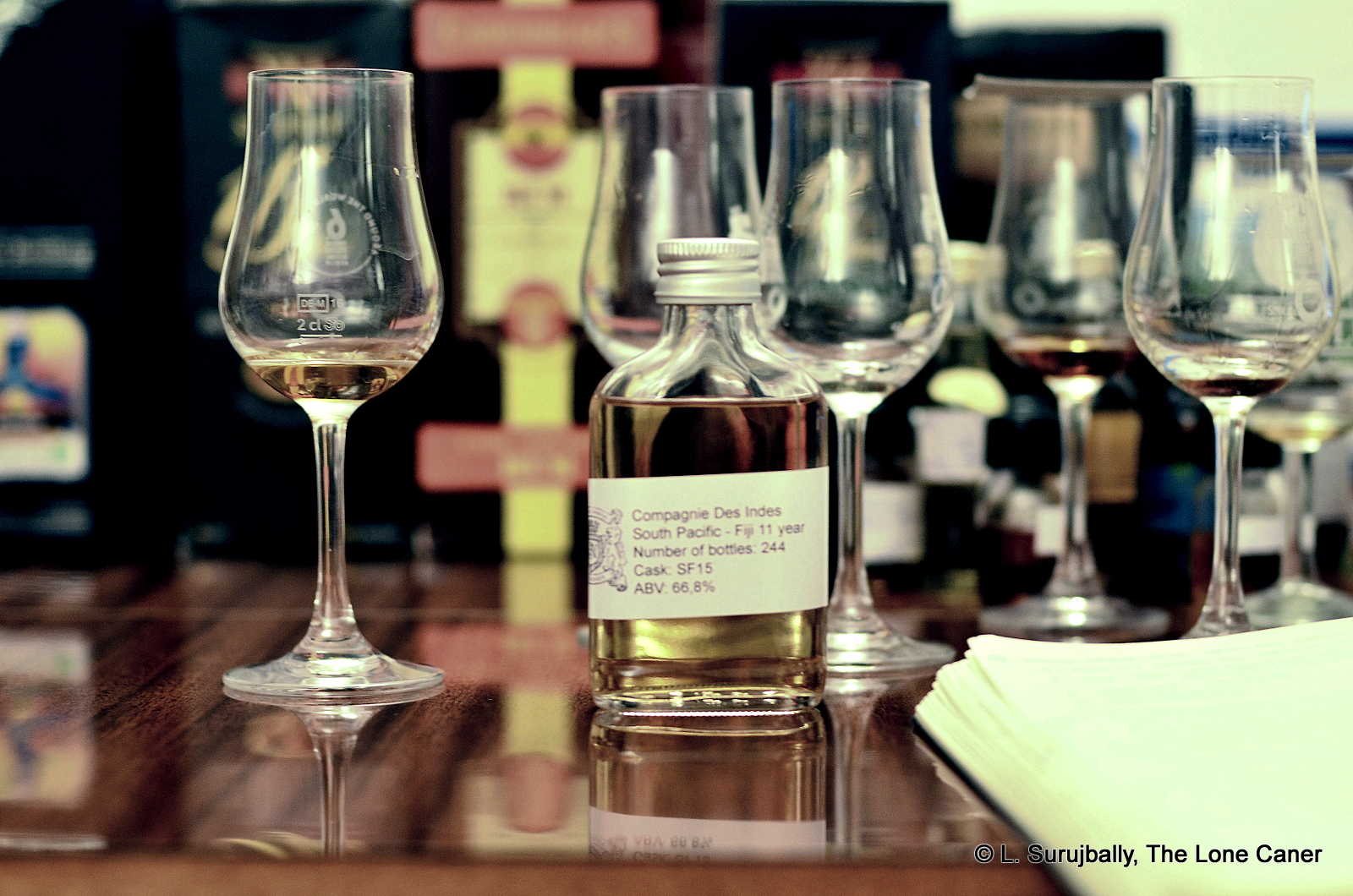
 It was obvious after one tiny sniff, that not one percentage point of all that proofage was wasted and it was all hanging out there: approaching with caution was therefore recommended. I felt like I was inhaling a genetically enhanced rum worked over by a team of uber-geek scientists working in a buried government lab somewhere, who had evidently seen King Kong one too many times. I mean, okay, it wasn’t on par with the
It was obvious after one tiny sniff, that not one percentage point of all that proofage was wasted and it was all hanging out there: approaching with caution was therefore recommended. I felt like I was inhaling a genetically enhanced rum worked over by a team of uber-geek scientists working in a buried government lab somewhere, who had evidently seen King Kong one too many times. I mean, okay, it wasn’t on par with the 
 That said, the still which produced this pale yellow 57.19% ABV rum remains an open question, though my personal belief is that it’s a column still product. It certainly noses that way – aside from presenting as a fierce little young rum, it lacks something of the depth and pungency of a pot still spirit. However, that doesn’t matter, because it’s damn fine on its own merits – brine, olives, paint, turpentine, acetones, fresh nail polish, more brine and gherkins, and that’s just the beginning. It has aspects that are almost Jamaican, what with a bunch of prancing dancing esters jostling for attention, except that the smell is not so crisply sweet. It develops very nicely into smoke, leather, linseed oil for cricket bats, more brine and oily smoothness. Like a set of seething rapids finished with the messing around, it settles down to a much more refined state after half an hour or so.
That said, the still which produced this pale yellow 57.19% ABV rum remains an open question, though my personal belief is that it’s a column still product. It certainly noses that way – aside from presenting as a fierce little young rum, it lacks something of the depth and pungency of a pot still spirit. However, that doesn’t matter, because it’s damn fine on its own merits – brine, olives, paint, turpentine, acetones, fresh nail polish, more brine and gherkins, and that’s just the beginning. It has aspects that are almost Jamaican, what with a bunch of prancing dancing esters jostling for attention, except that the smell is not so crisply sweet. It develops very nicely into smoke, leather, linseed oil for cricket bats, more brine and oily smoothness. Like a set of seething rapids finished with the messing around, it settles down to a much more refined state after half an hour or so. Kill Devil is the rum brand of the whiskey blender Hunter Laing, who’ve been around since 1949 when Frederick Laing founded a whisky blending company in Glasgow. In 2013 the company created an umbrella organization called Hunter Laing & Co, into which they folded all their various companies (like Edition Spirits and the Premier Bonding bottling company). The first rums they released to the market – with all the now-standard provisos like being unadulterated, unfiltered and 46% – arrived for consumers in 2016, which meant that this rum from the South Pacific Distillery on Fiji, was issued as part of their first batch (oddly, their own website provides no listing of their rums at all aside from boilerplate blurbs). When the time came for me to decide what to sample, the
Kill Devil is the rum brand of the whiskey blender Hunter Laing, who’ve been around since 1949 when Frederick Laing founded a whisky blending company in Glasgow. In 2013 the company created an umbrella organization called Hunter Laing & Co, into which they folded all their various companies (like Edition Spirits and the Premier Bonding bottling company). The first rums they released to the market – with all the now-standard provisos like being unadulterated, unfiltered and 46% – arrived for consumers in 2016, which meant that this rum from the South Pacific Distillery on Fiji, was issued as part of their first batch (oddly, their own website provides no listing of their rums at all aside from boilerplate blurbs). When the time came for me to decide what to sample, the 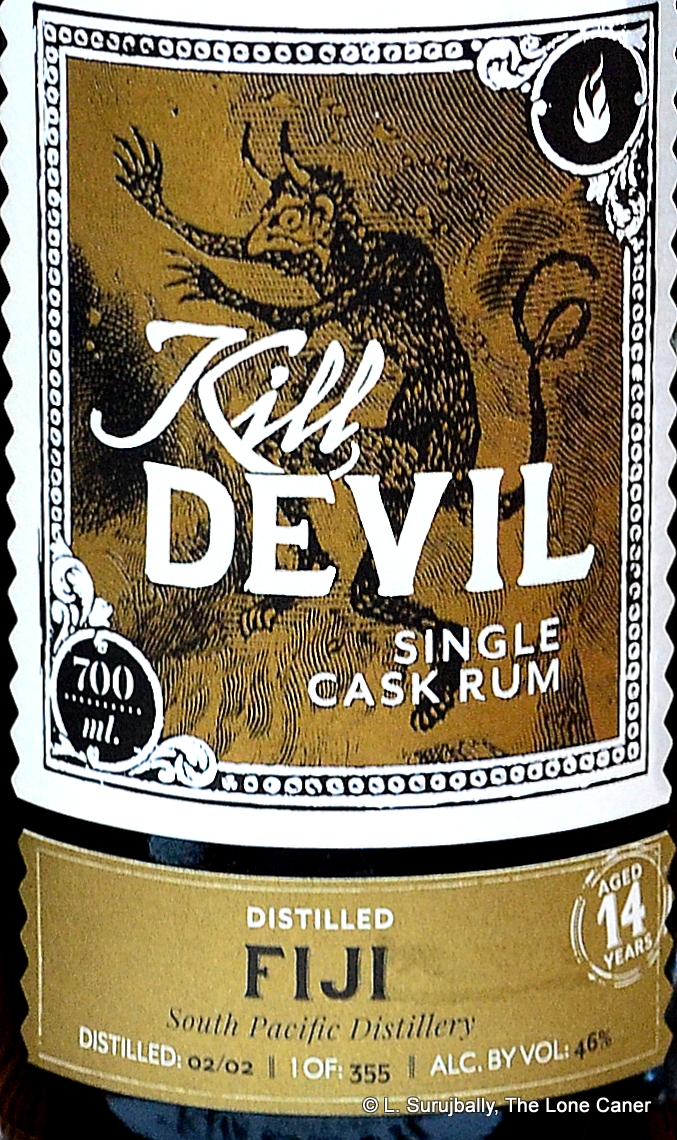 On the palate the fruits started to take over, tart and a unripe, like ginnips and soursop together with ripe mangoes, pineapple and cherries in syrup right out of a can – there was hardly any of the brininess from the nose carrying over, and as it developed, additional hints of pears, watermelon, honey, and pickled gherkins were clearly noticeable. It was warm and crisp at the same time, quite nice, and while the long and heated finish added nothing new to the whole experience, it didn’t lose any of the flavours either; and I was left thinking that while different from other Fijians for sure, it seemed to be channelling a sly note of Jamaican funk throughout, and that was far from unpleasant….though perhaps a bit at odds with the whole profile.
On the palate the fruits started to take over, tart and a unripe, like ginnips and soursop together with ripe mangoes, pineapple and cherries in syrup right out of a can – there was hardly any of the brininess from the nose carrying over, and as it developed, additional hints of pears, watermelon, honey, and pickled gherkins were clearly noticeable. It was warm and crisp at the same time, quite nice, and while the long and heated finish added nothing new to the whole experience, it didn’t lose any of the flavours either; and I was left thinking that while different from other Fijians for sure, it seemed to be channelling a sly note of Jamaican funk throughout, and that was far from unpleasant….though perhaps a bit at odds with the whole profile.

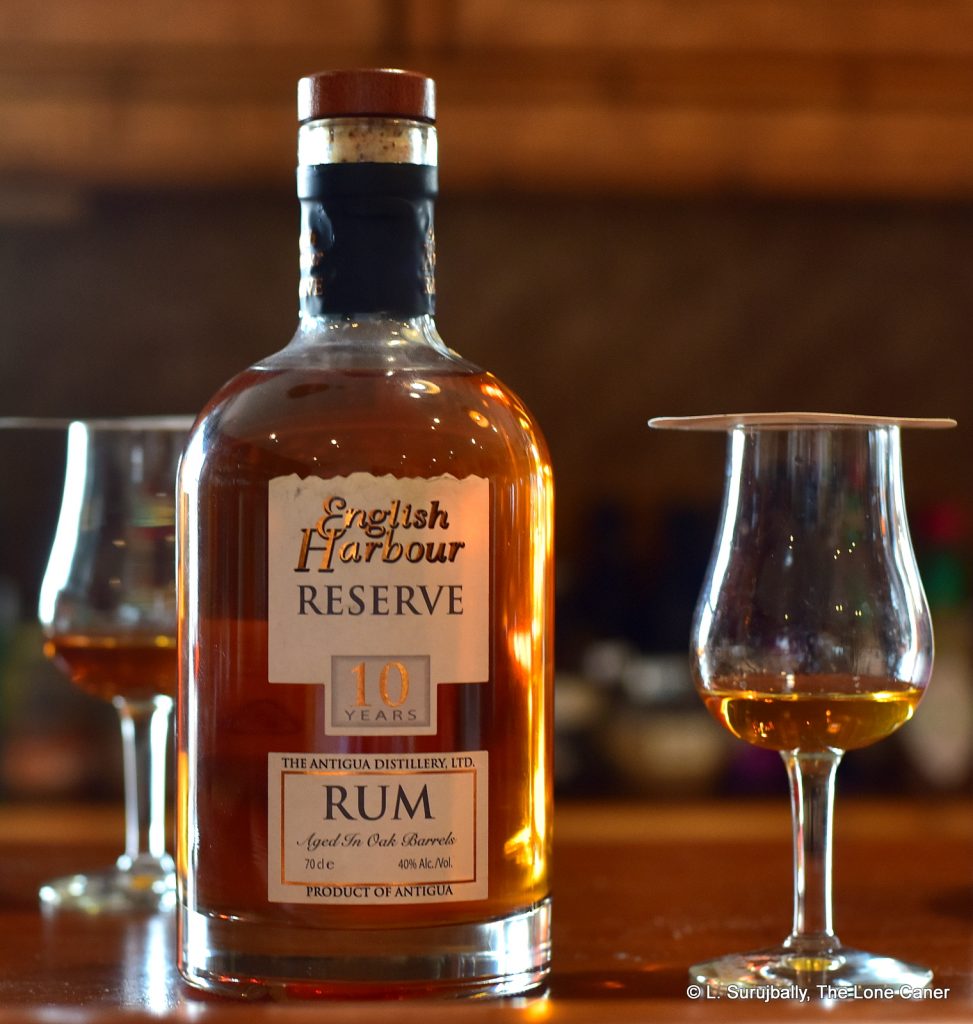
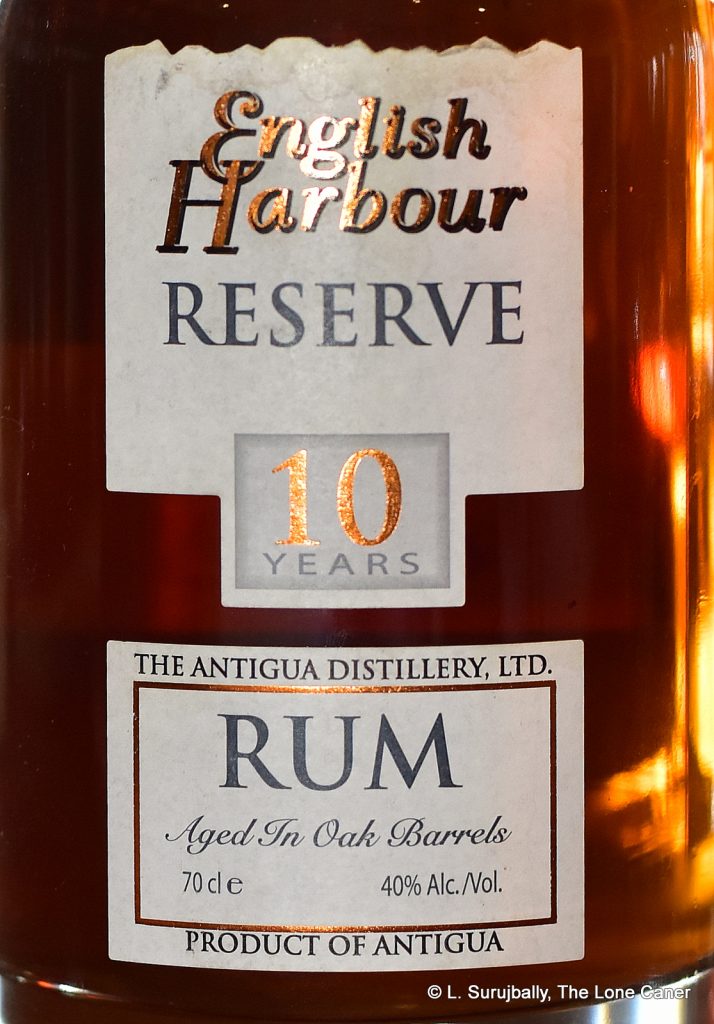 The nose begins with an astringent sort of dryness, redolent of burnt wood chips, pencil shavings, light rubber, citrus and even some pine aroma. It does get better once it’s left to itself for a while, calms down and isn’t quite as aggressive. It does pack more of a punch than the 25 YO, however, which may be a function of the disparity in ages – not all the edges of youth had yet been shaved away. Additional aromas of bitter chocolate, toffee, almonds and cinnamon start to come out, some fruitiness and vanilla, and even some tobacco leaves. Pretty nice, but some patience is required to appreciate it, I’d say.
The nose begins with an astringent sort of dryness, redolent of burnt wood chips, pencil shavings, light rubber, citrus and even some pine aroma. It does get better once it’s left to itself for a while, calms down and isn’t quite as aggressive. It does pack more of a punch than the 25 YO, however, which may be a function of the disparity in ages – not all the edges of youth had yet been shaved away. Additional aromas of bitter chocolate, toffee, almonds and cinnamon start to come out, some fruitiness and vanilla, and even some tobacco leaves. Pretty nice, but some patience is required to appreciate it, I’d say.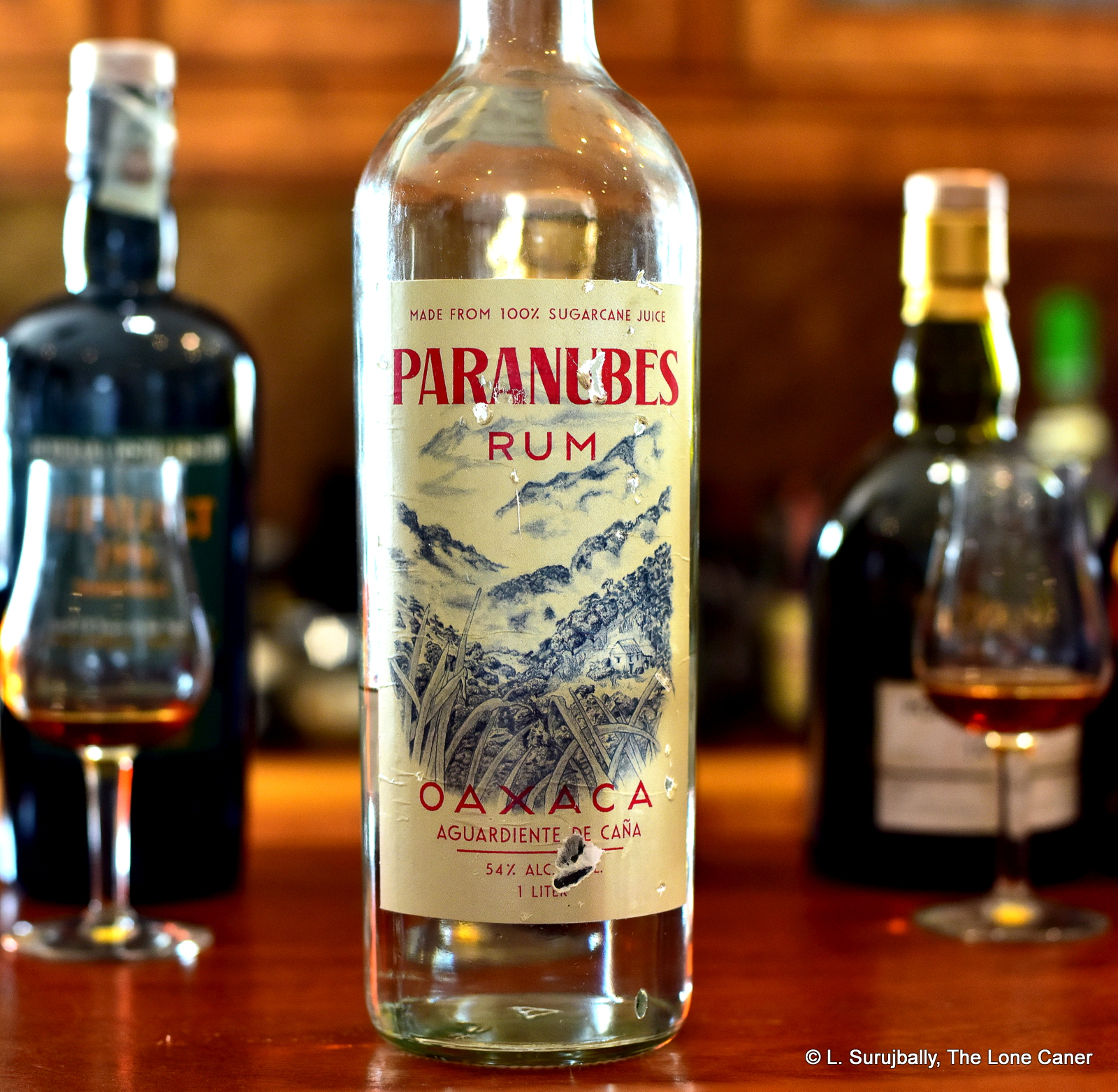
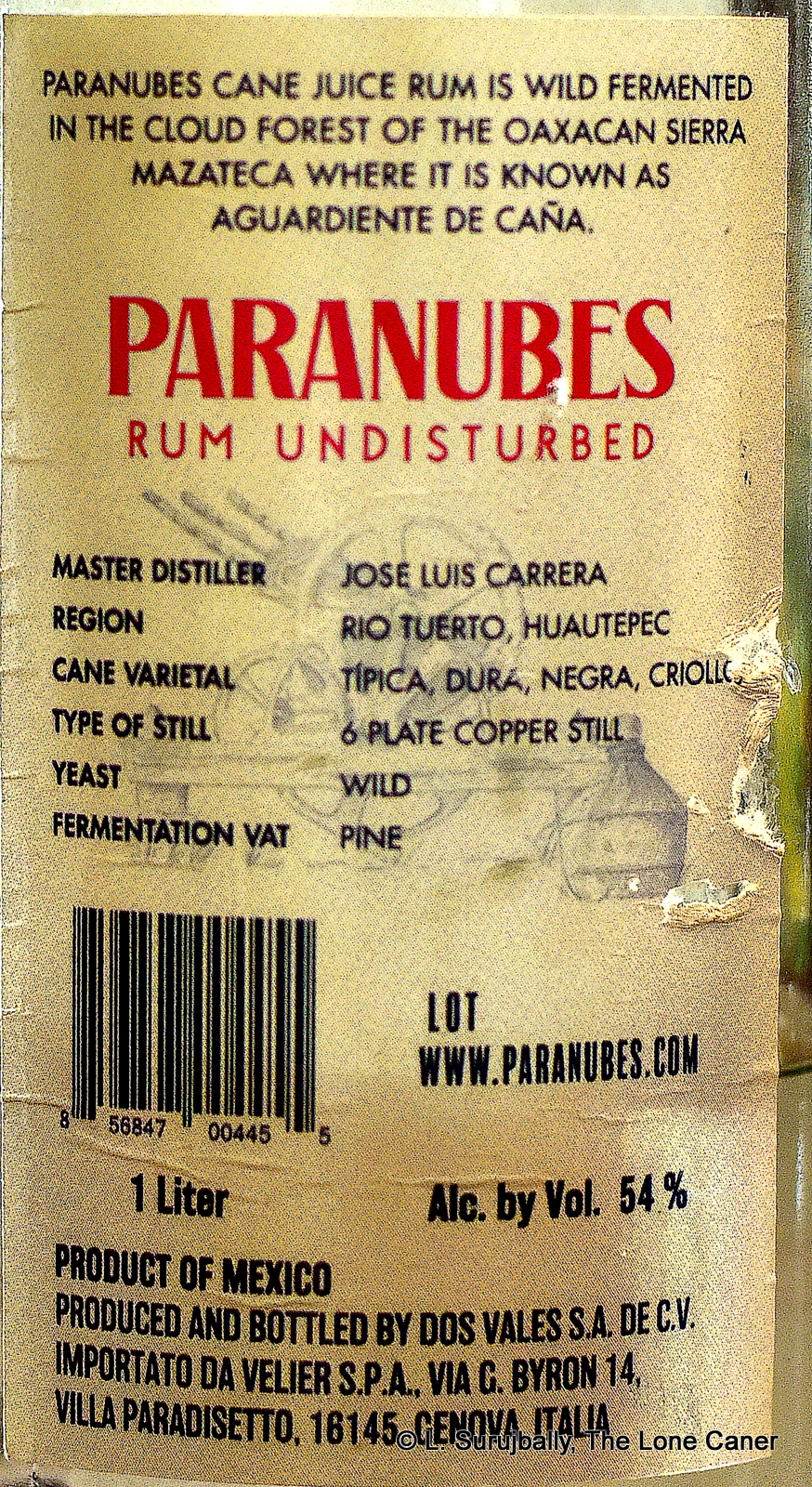
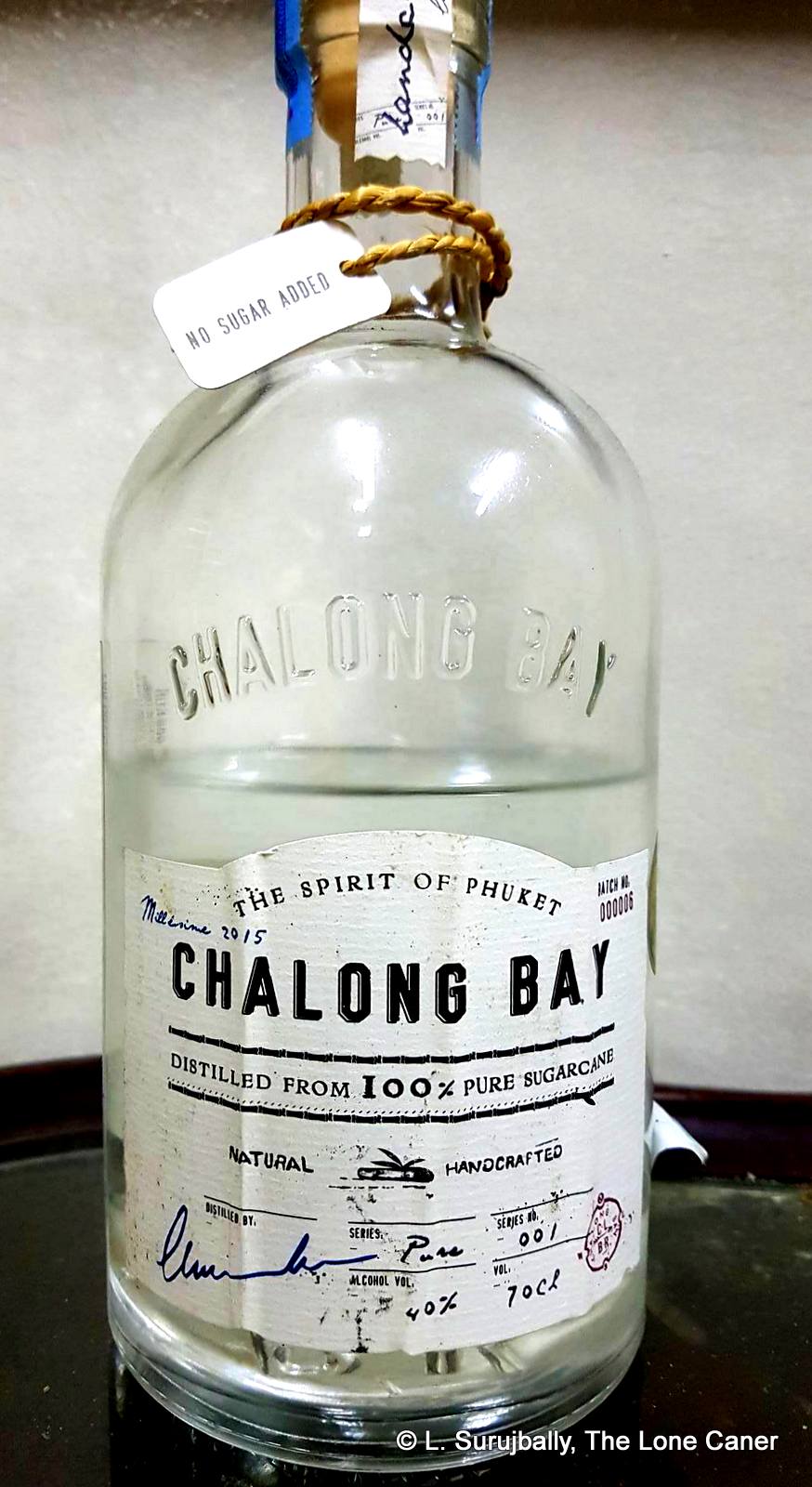
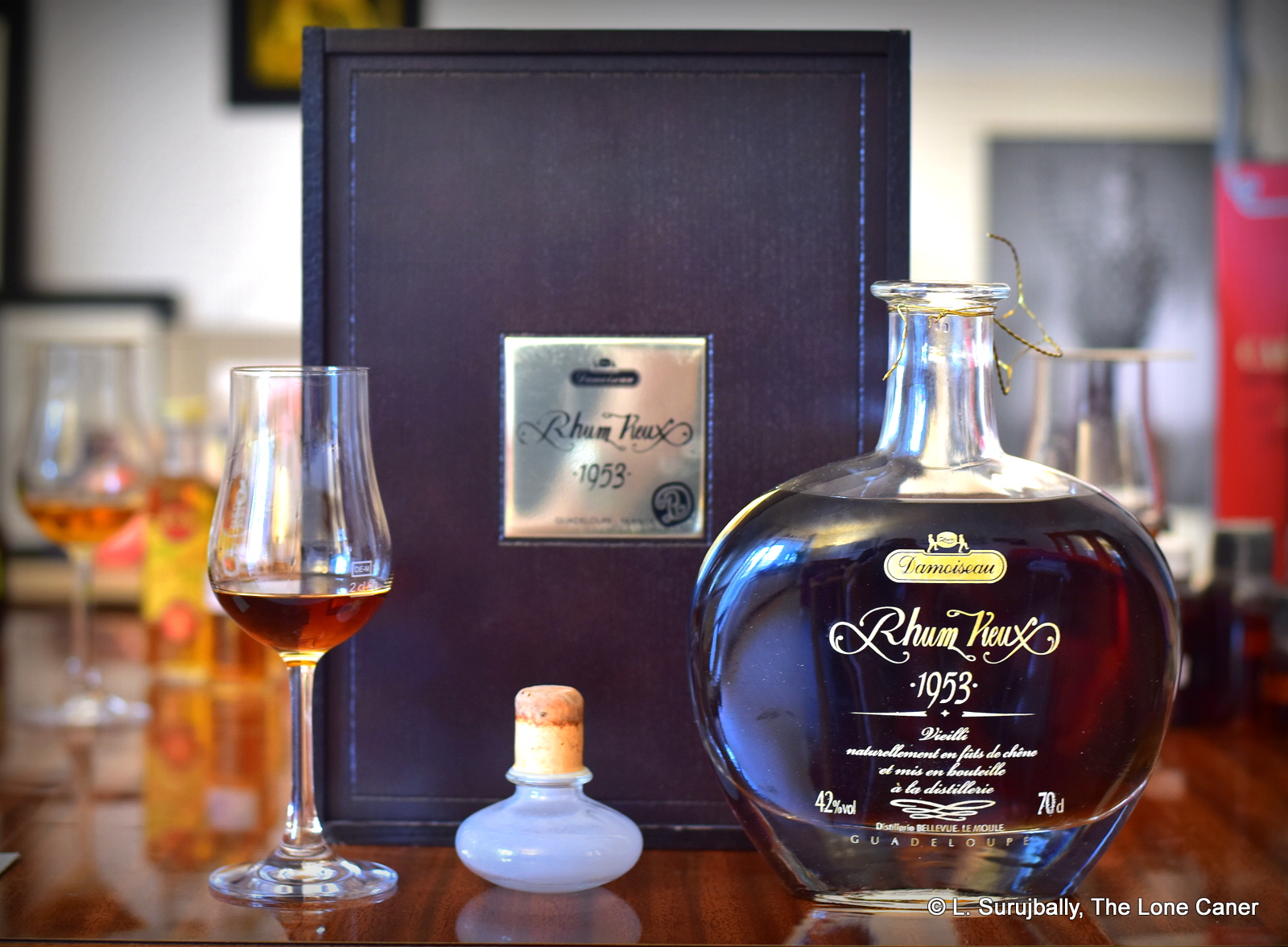
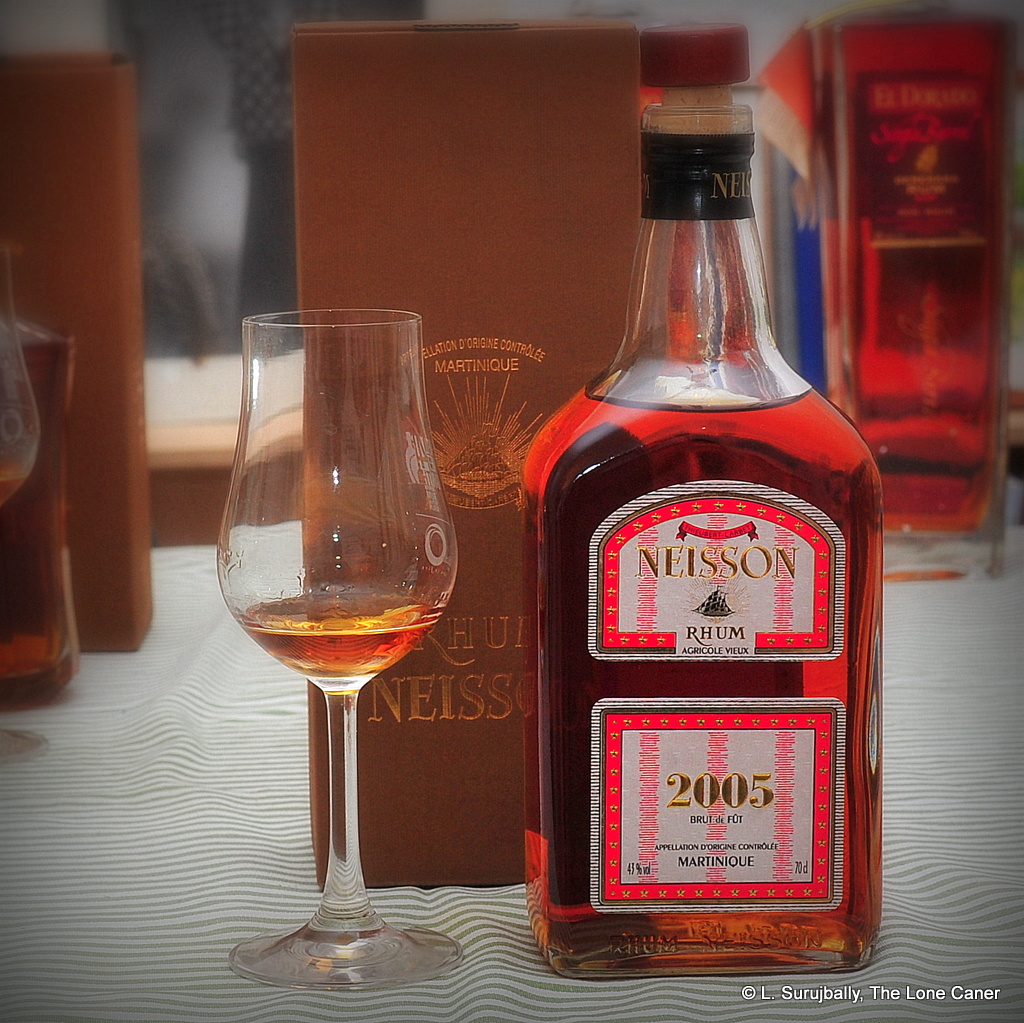
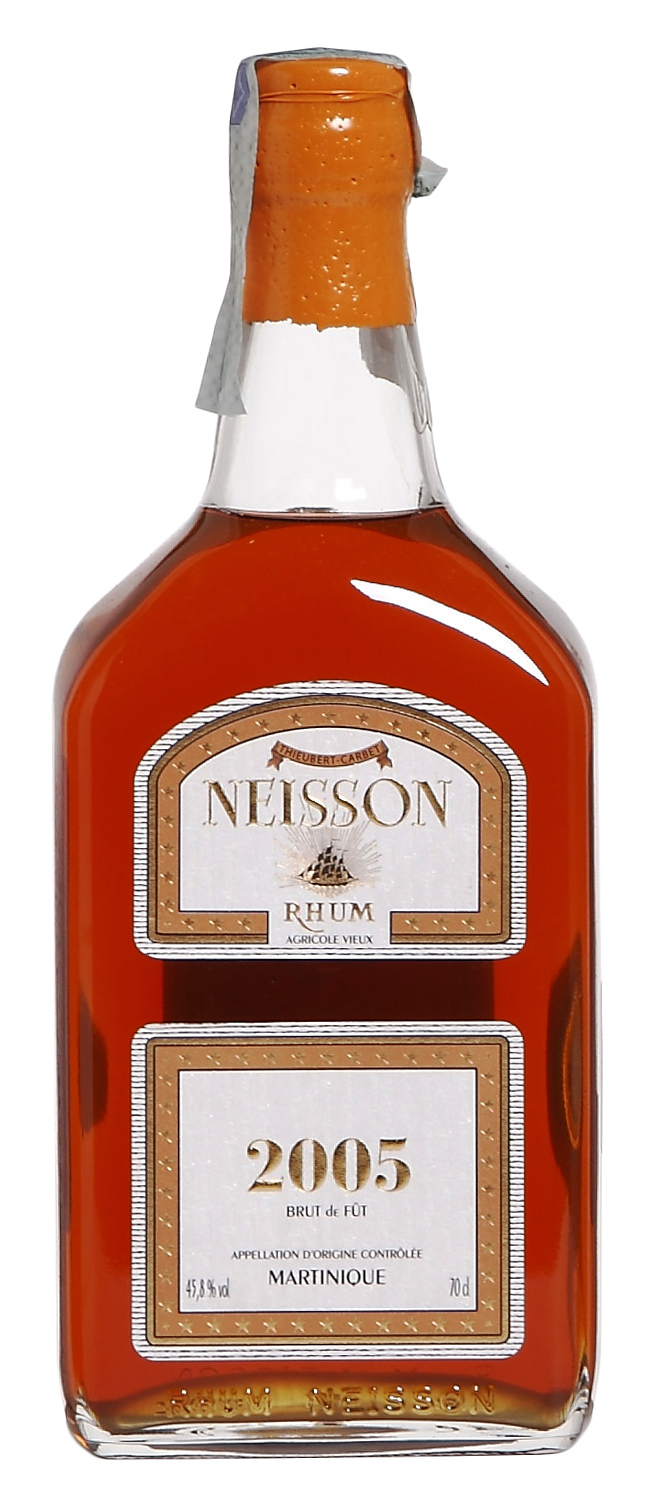
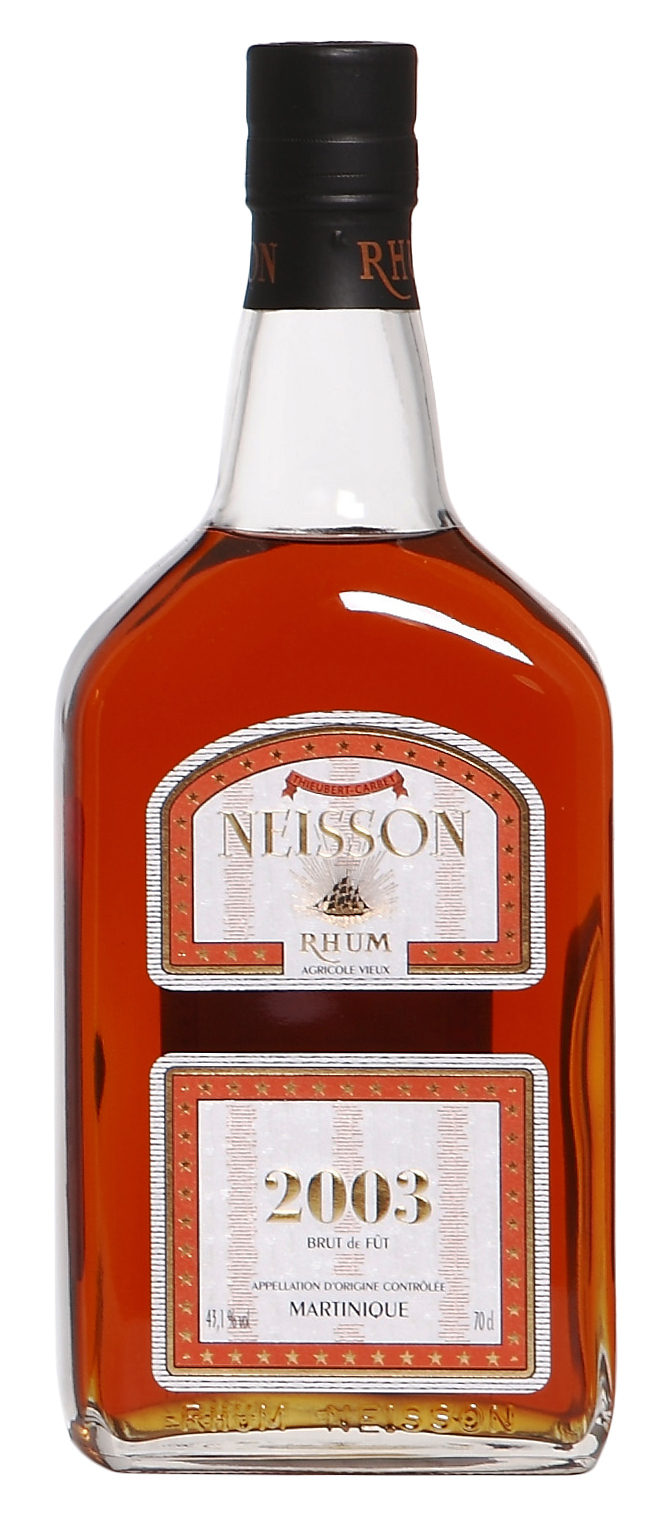 Rumaniacs Review #073 | 0488
Rumaniacs Review #073 | 0488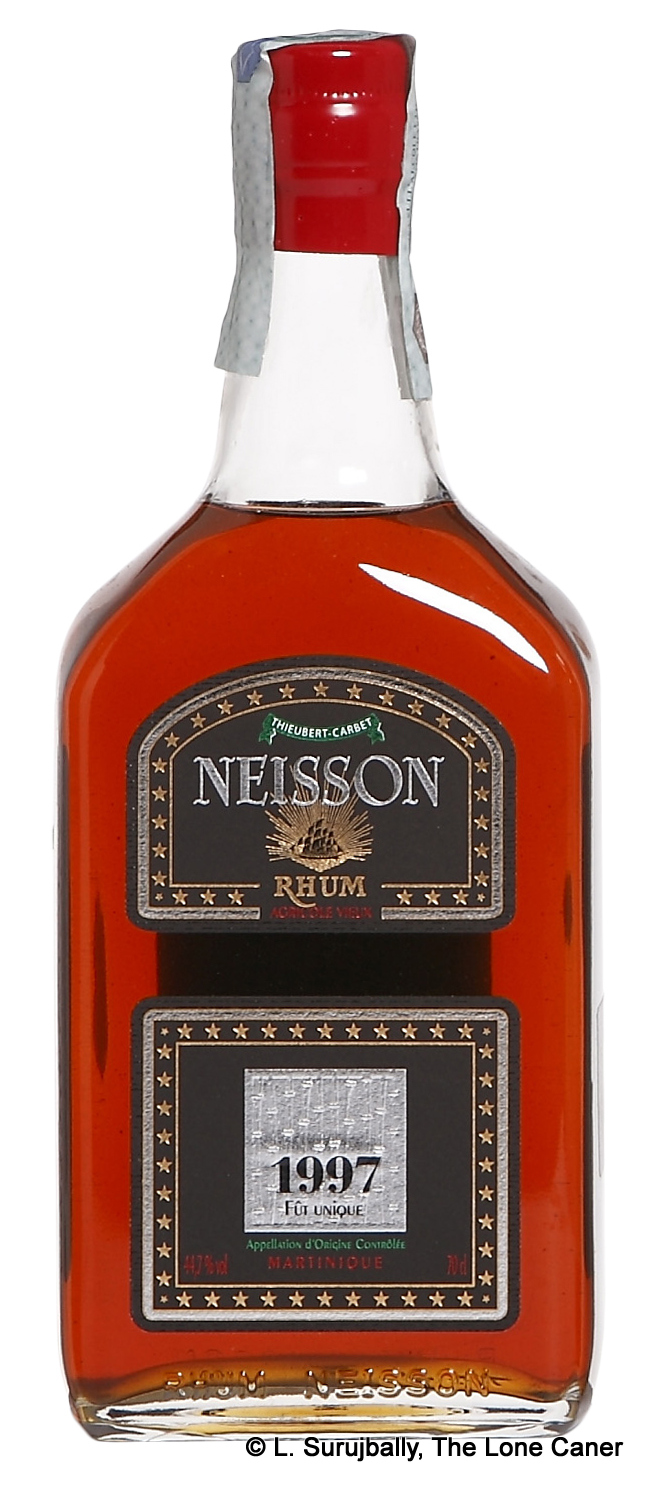 Rumaniacs Review #072 | 0486
Rumaniacs Review #072 | 0486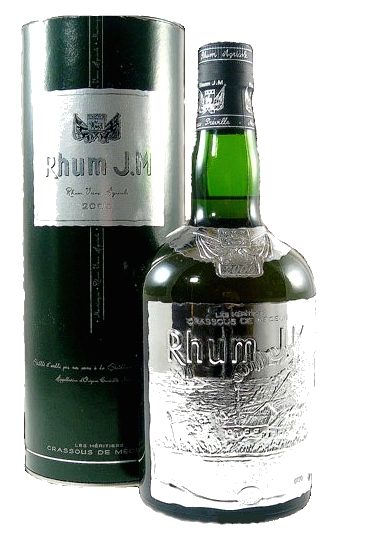
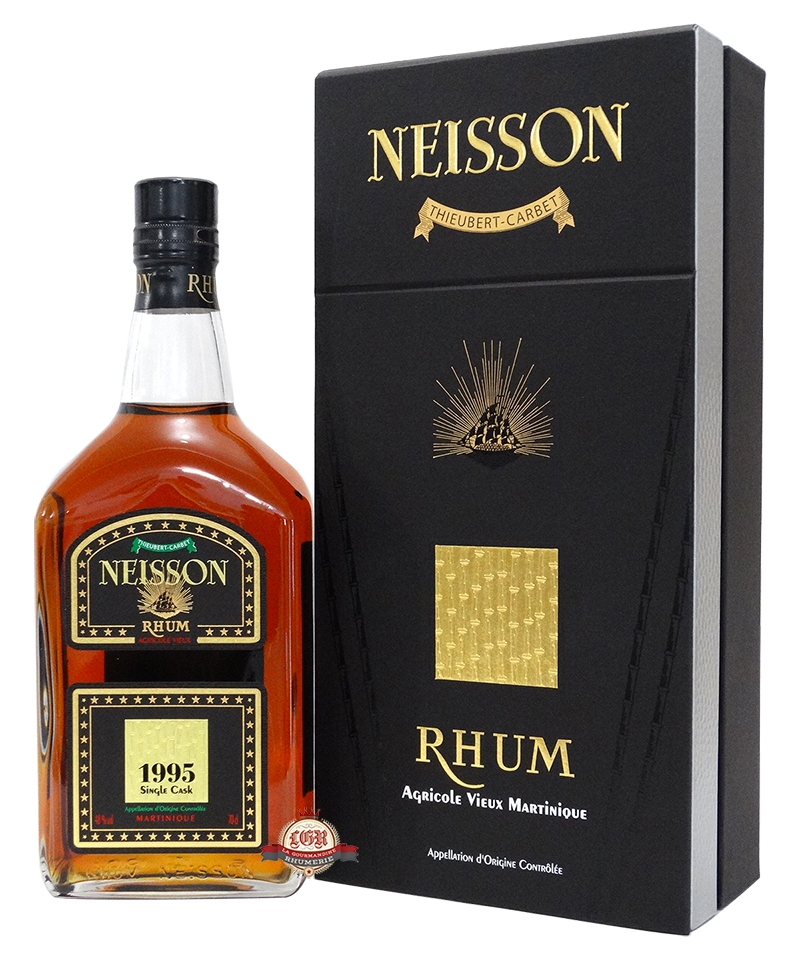 Rumaniacs Review #071 | 0484
Rumaniacs Review #071 | 0484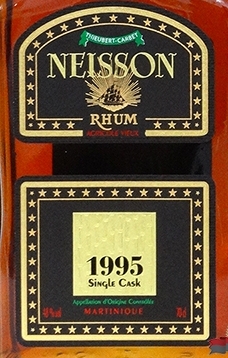 Palate – Thrumming and deeply vibrant rhum, one wonders how they wrung such depth out of a “mere” 48% – however, I’m not complaining. Dark and hot black tea. Ripe apricots, overripe mangoes, honey, cherries, wound about and through with citrus peel. Also some anise, coca cola (odd, but there you are). Dill, sage, a flirt of mint, grass, a faint wine-y tone and yes, there’s a whiff of chocolate as well.
Palate – Thrumming and deeply vibrant rhum, one wonders how they wrung such depth out of a “mere” 48% – however, I’m not complaining. Dark and hot black tea. Ripe apricots, overripe mangoes, honey, cherries, wound about and through with citrus peel. Also some anise, coca cola (odd, but there you are). Dill, sage, a flirt of mint, grass, a faint wine-y tone and yes, there’s a whiff of chocolate as well.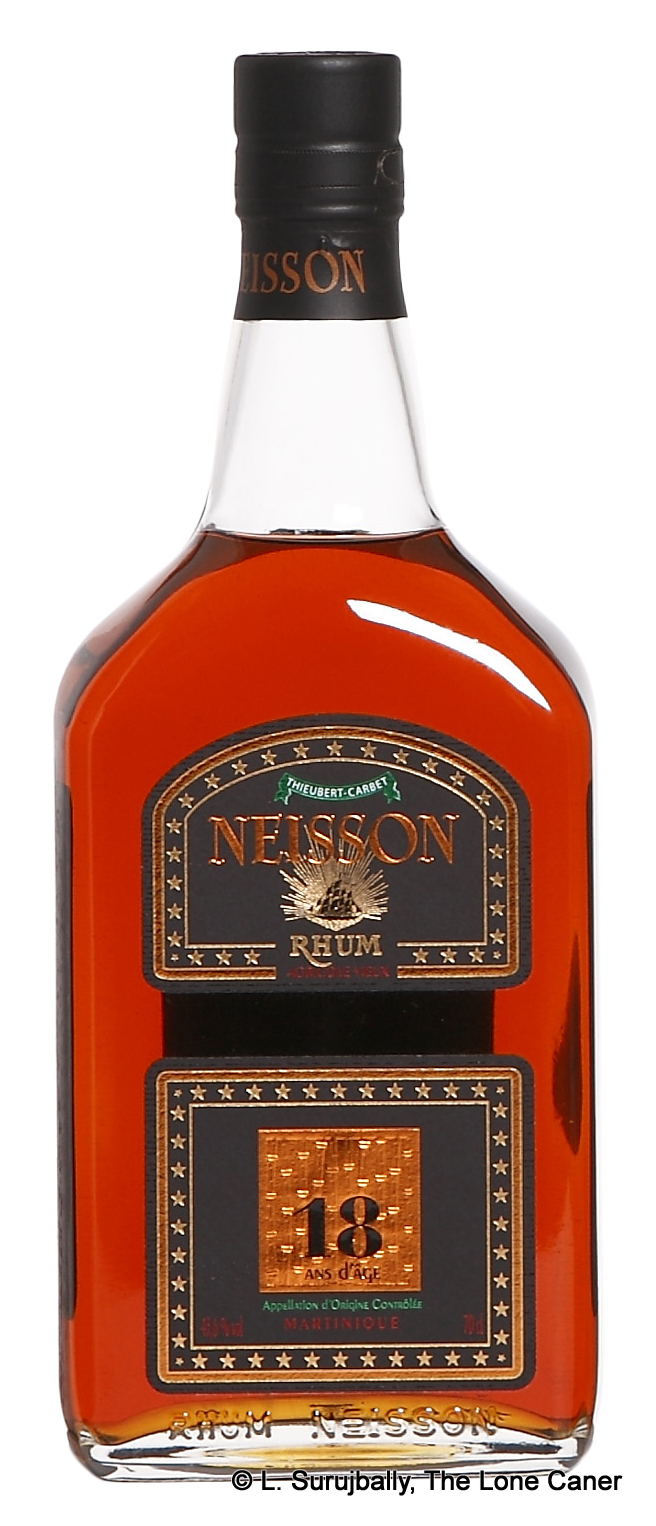 Rumaniacs Review #070 | 0482
Rumaniacs Review #070 | 0482